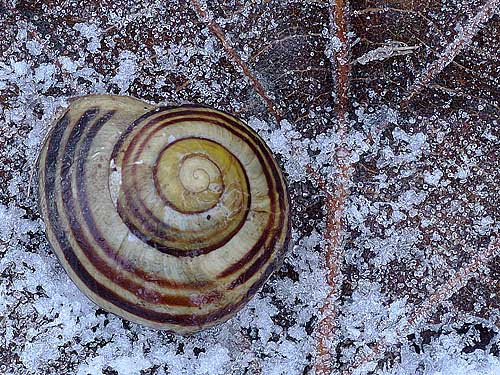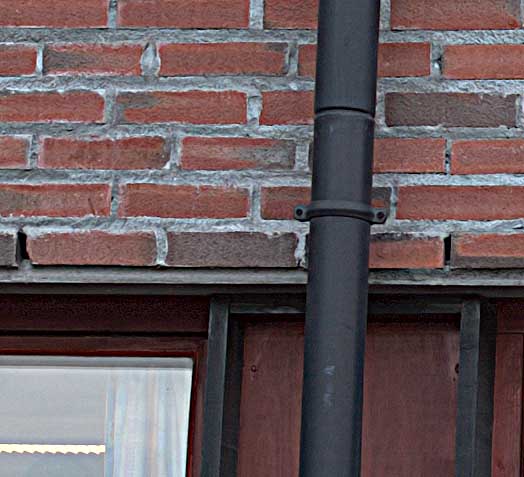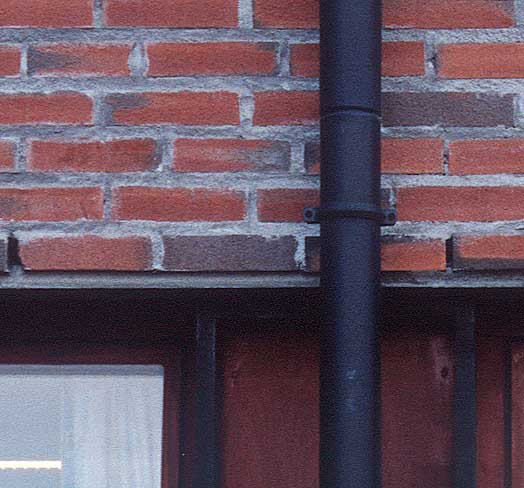Taking Nikon's D1 For
A Field Spin
By Bjørn Rørslett
Review date 12 December, 1999
Nikon's new digital pride, the D1, is the
object that everybody wants to have, but yet cannot get. Demand
for this super-camera by far exceeds supplies and this situation
is likely to remain so for the near future. Having tried the D1
briefly just after it being shown to the press in June, 1999, I
finally managed to borrow a D1 camera to give it a realistic
field day under bitterly cold Norwegian winter conditions. This
D1 was a very early production camera (#5000205) as opposed to
the pre-production sample camera I've earlier tried out. That
sample camera certainly had its share of digital bugs and I was
anxious to see if Nikon had sorted out these gremlins in their
production cameras.
Details of the camera have been presented
earlier and those eager to learn about the D1 and its main
features can examine these here. I shall not
delve into such details here - suffice to say that the camera is
similar in size to the F5, handles much the same way and operates
even more silently. The big difference is the large LCD display
on the rear of the D1 that gets its share of grease marks during
a long field day. Nikon supplies a plastic cover that alleviates
the problem unless one wants to study the LCD data.
I programmed D1 to capture images as 12 bit
raw files, that is, storing the full sensor output from the CCD
chip without any alteration at all. The raw format is economical
as far as storage goes because the colours themselves neither are
stored nor computed when the image is taken. Transforming these
data into full-blown RGB images is done with the Nikon Capture
Program. This software, mandatory for working with the raw files,
still is in a pre-release version. It works by performing complex
matrix operations on the raw data and adding the primary colours
by interpolation. The data files are stored in the D1 camera on
flashcards until downloaded to a PC as proprietary NEF
files (the acronym possibly denotes Nikon Economical Format?
officially, however, it's the more mundane acronym for Nikon
Electronic image Format - what a pity). These NEF-formatted files
subsequently have to be run through the Nikon Capture program,
which converts the data to standard RGB or CMYK images. This
software is capable of storing these image files as 24 or 48 bit
RGB TIFF, equalling 7.51 or 15.0 MB worth of data, respectively.
Pure CMYK images occupy 10.0 MB. These TIFF file sizes bear
little relationship to the sizes we use for scanned film-based
images, because the true digital images are virtually free of
noise and grain structure and hence stand much bigger
magnification than ordinary pictures. Nikon Capture also can
store image data in JPG or BMP format.
The Nikon Capture software, in its
pre-release version 1.1a, works as per specification and packs a
number of sophisticated features. Amongst these, an extremely
advanced unsharp masking(USM) method stands out. This USM runs
directly on the original pixel data and takes into consideration
colour tones and intensity, shadows, midtones, and highlight
areas, besides contrast differences between neighbouring image
elements. It makes true wonders with the image data from the D1.
Raw files load quite fast from the camera to be shown on the PC,
and they screen even quicker if the NEF files are downloaded to
disk beforehand. This speed however is of little significance
because the Nikon Capture Program likely is the slowest-running
program I have ever used. Even on my potent NT dual-CPU Pentium
III/600 MHz machine with 1024 MB RAM and 100 GB worth of disk
space, screen redraws take ages. Even worse, some extreme
settings of the USM filter effectively hang the machine because
the program is trapped in endless loops or whatever. I sincerely
hope the production version of this otherwise excellent program
gets quite a lot speedier! Also I hope for some way of saving all
the nifty and highly detailed image exposure data that accompany
the NEF files, but which seem to be lost when they are converted
into TIFF or JPG format.
For field use, I loaded the Nikon Capture
software onto my more modest Toshiba portable (Pentium 233MMX
with 64 MB RAM) running Windows98. To get acceptable performance
on this system, I constrained the program mainly to downloading
raw files from the D1 and saving these to disk. This is quickly
accomplished by inserting the Flashcards into a Flashcard/PCMCIA
adapter. Occasionally I did a quick review of an image without
using any zooming or sharpening features turned on. This approach
worked quite well under field conditions and thus I downloaded
images from an 80 MB Lexar flashcard in just a few minutes. I
soon realised that having a huge disk drive, or other means of
auxiliary storage, is a must if one is working long sessions with
D1 in the field. The NEF files occupy 4MB and a period of fast
shooting fills up the disk space at an alarming pace. Next time I
am prepared for this and will hook up a 650 MB Fujitsu MO-drive
to the portable.
I was initially worried about the batteries
of the D1 when the camera was exposed to rough Norwegian winter
conditions. However, during a long working day under subzero
temperatures, they took the strain without problems. This
presumes the batteries being freshly charged, of course. The LCD
display got a little sluggish in the cold, however. Another issue
was the frequent formation of a thin ice crust on the display
(from my breath), that had to be scraped away ever so often.
Well, ain't we Vikings so this we can cope with ...
Shooting with the D1 proved to be sheer
fun. The camera is fast and very responsive. I mounted old manual
lenses and my recently acquired AFS lenses and D1 took all in its
stride. The TTL metering falls back to centre-weighted mode when
an MF lens is mounted and I saw no problems whatsoever using my
favourite 300 mm f/2.8 ED-IF Nikkor on D1. With either AFS 17-35,
AFS 28-70 or 85 PC-Micro Nikkor all the advanced metering
capabilities of the D1 were available. Running D1 on automatic
'A' mode, I got virtually perfect exposures with the these lenses
under a wide variety of shooting conditions. I switched back and
forth between my F5 and D1 and these two are highly
interchangeable as far as operability is concerned. Being able to
recall the histogram of pixel intensity distribution is a
tremendous asset and a bullet-proof way of getting the exposure
dead-on with the D1. There is all sorts of bracketing features as
those known from the F5 and the advanced colour matrix metering
system of D1 surpasses that of the F5. The camera's ability to
recalibrate itself according to the tone range of the scene
undoubtedly contributes to the near-perfect end results of the
D1.
I was truly blown away by the unprecedented
quality of the digital images delivered from the D1. Prints 20 x
30 cm looked as were they obtained with an 8x10" camera.
Period. There is a tremendous clarity to the images that truly is
breathtaking. Accustomed as we are with film-based pictures and
their inherent graininess, we simply are not prepared for the
impact of virtually grainless images. On a further notice, it can
be seen that the superior shadow rendition of the digital images
greatly contribute to the perceived sharpness.
 |
© Bjørn
Rørslett/NN 1999
|
| A small, 4x5 mm section, of the
full image frame shows the exquisite results that are
given by the D1's colour metering system. The snow
crystals are perfectly exposed while the bands of the
small snail's shell take on perfect darkish tones. The
image was taken with the 85 mm f/2.8 PC Micro-Nikkor at
1:2 magnification and D1 set to 'A' mode, no bracketing. |
Test shooting (of my "favourite"
object, a brick wall) indicated that the digital quality
attainable with D1 easily matches or surpasses traditional ISO
100 quality on the F5. Examples are given below. Each image is a
small section of a full frame, both taken with AFS 17-35 mm f/2.8
(at f/8 @35 mm) from an identical standpoint. The loss of shadow
detail and increased graininess of the film-based image are very
evident in these comparison shots. Before their publishing on the
Web, both images were run through a standard unsharp masking
filter in PhotoShop at identical settings so should be directly
comparable.
 |
 |
| Test shoots with Nikon D1 (upper
image) and F5 (lower image, using Kodak E100VS film).
Both images obtained using AFS 17-35 mm f/2.8 Nikkor (f/8
@ 35 mm) and represent a 4x5 mm section of the full 24x36
mm frame. Note the virtual lack of grain in the D1 image
and the enhanced rendition of shadow detail. |
Needless to say, I'm eagerly looking
forward to getting my own D1 in the very near future. This camera
will change the way I'm working with photography and might even
open new avenues for my photographic perception. The prospects
for the forthcoming Millennium certainly look brighter than ever
before.
PS. I did get my D1 (camera #5008559) a
few days later and have since been busy putting it through its
paces. Read here for
more impressions. DS.
| Top of Page | Reviews | Lens
Reviews | Equipment Page | UV Colour | Gallery Page
| Start Page |
Last update 12 January, 2000


